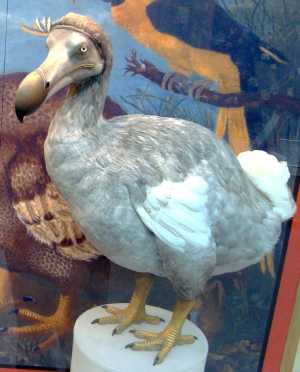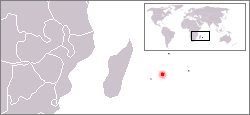 SKC Films Library SKC Films Library |
| SKC Films Library >> Science >> Zoology >> Birds >> Order Columbiformes |
| Dodo Bird Raphus cucullatus Portuguese sailors were the first to see the fat, ungainly bird now known as the dodo, when they inadvertently landed on the island of Mauritius in 1507. The Dutch colonized Mauritius in 1644, and brought with them several animals which preyed on the defenseless birds. The interference of foreign animals coupled with the overuse of the birds for food quickly led to the dodo's extinction, in 1681.
Description All present-day descriptions of the dodo are based on impartial skeletons and a few written accounts dating back to the 1600's. However, it appears that the dodo was a large, plump bird covered in soft, gray feathers, with a plume of white at its tail. It had very small wings, and short, stubby legs. One of its most distinguishing features was its crooked and hooked beak, which was light green or pale yellow in color. Distribution and Habitat The dodo inhabited the island of Mauritius, located about 500 miles east of Madagascar. Although many popular stories and pictures place the dodo along the shores of that island, it was actually a forest-dwelling bird.
Reproduction Specifics about mating and incubation periods were never recorded, but it was believed that the female laid one egg in a bed of grass, which she would then protect until it hatched. Other Habits and Behaviors Sailors who saw the dodo commonly described it as a lazy, rather dumb bird. It had little need for defensive behaviors, however, since it had no enemies until discovered by humans and their domesticated animals. Scientific Classification phylum Chordata WEB SOURCE SEE ALSO |
| SKC Films Library
>> Science
>> Zoology >> Birds >> Order Columbiformes This page was last updated on June 14, 2017. |

